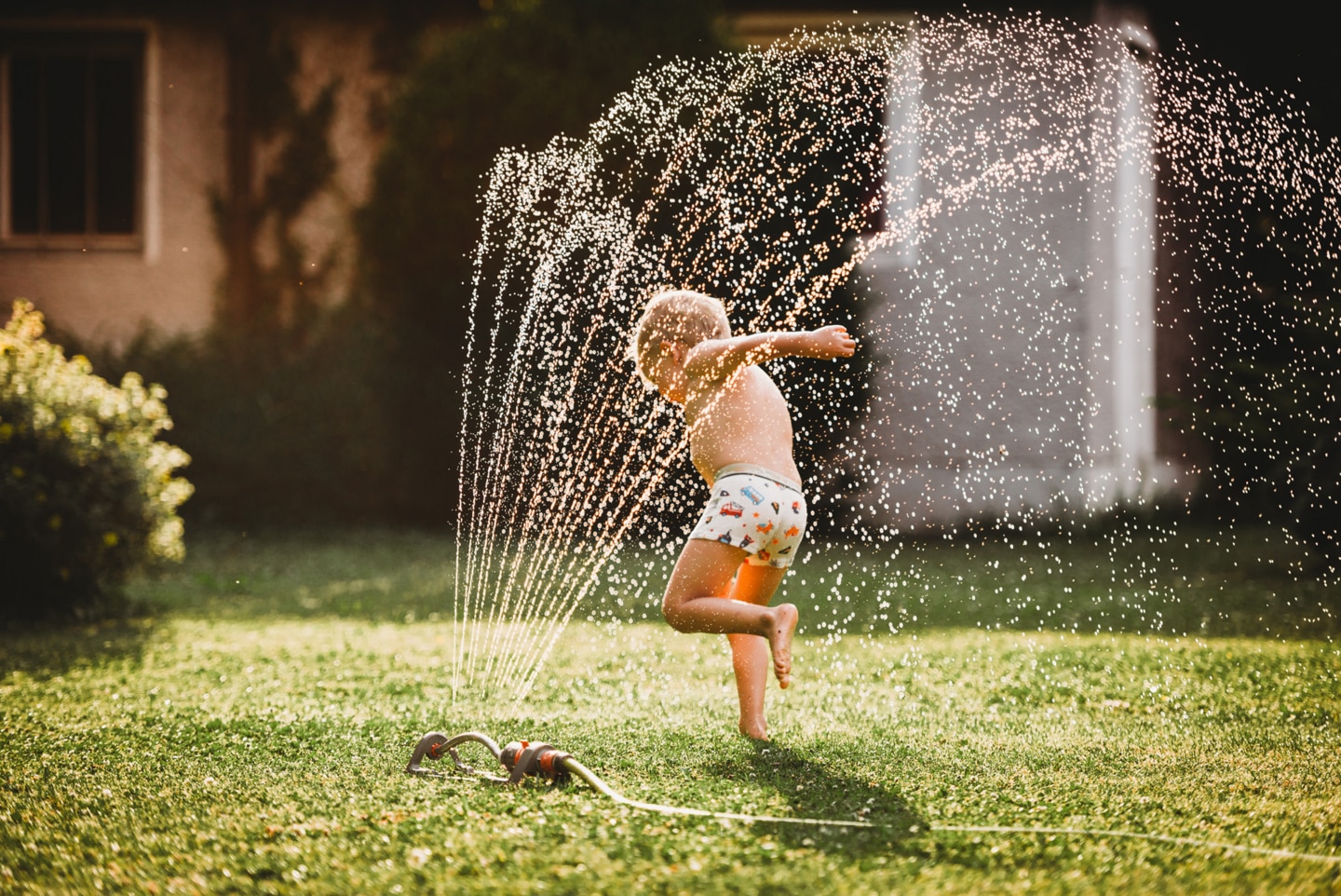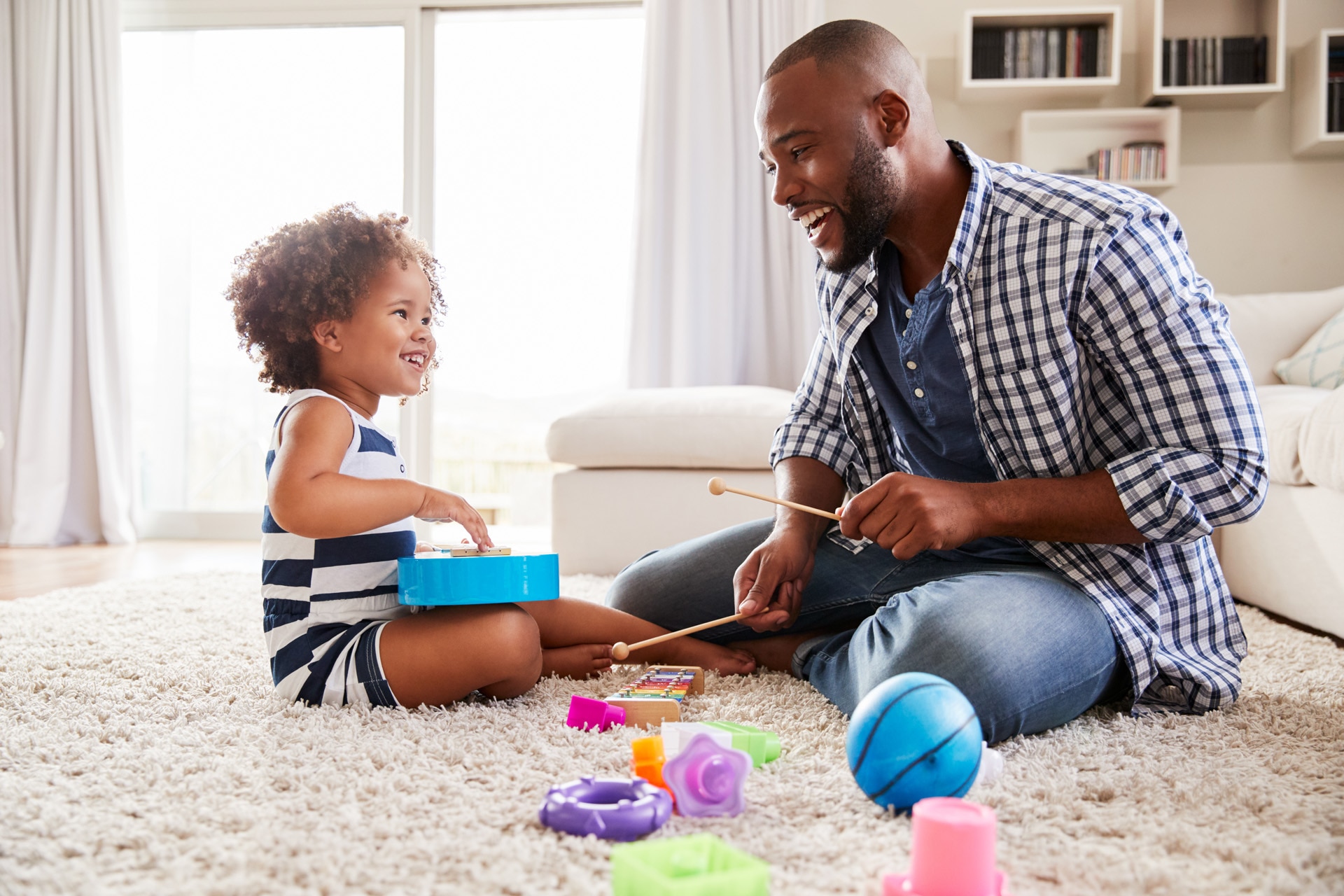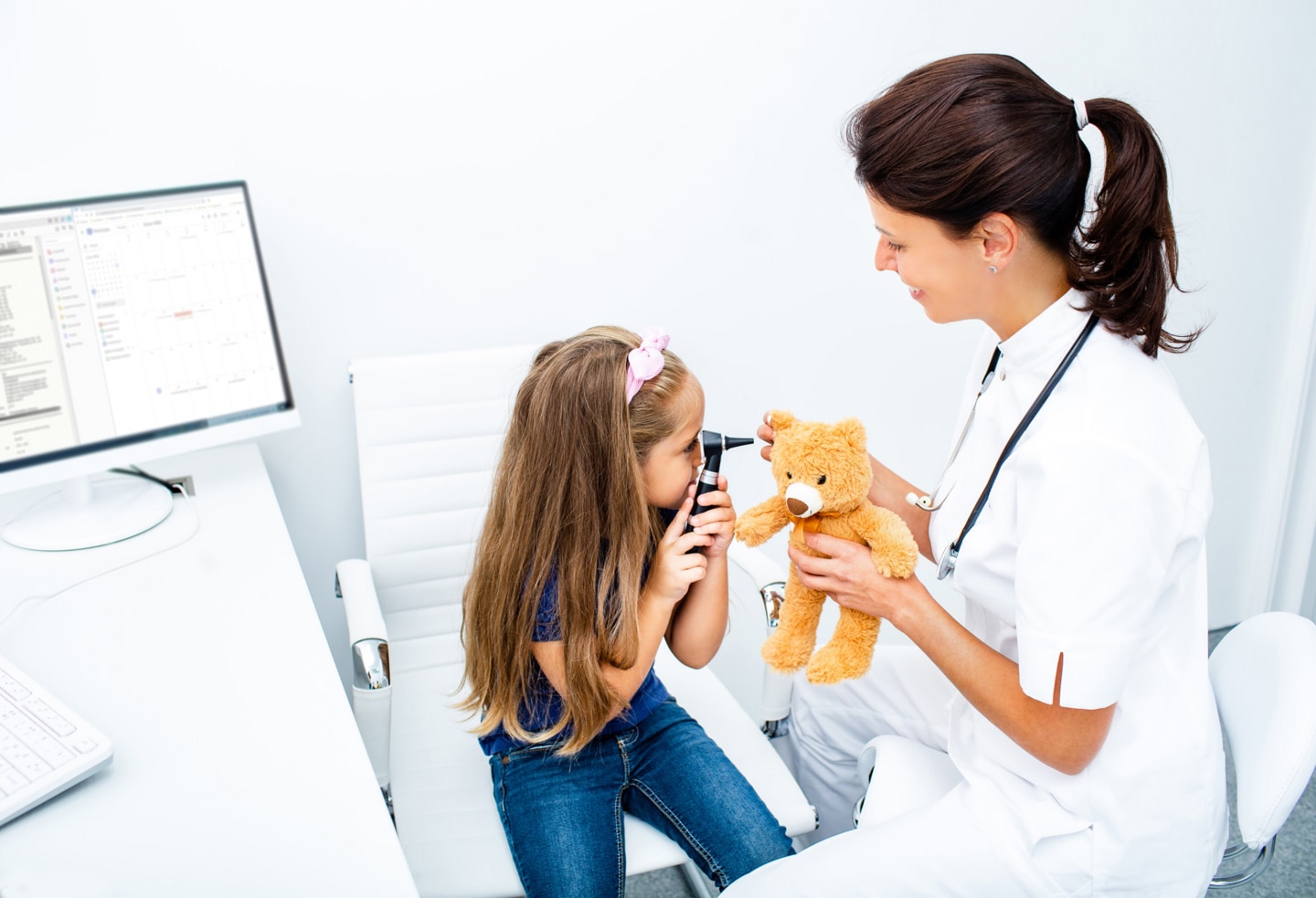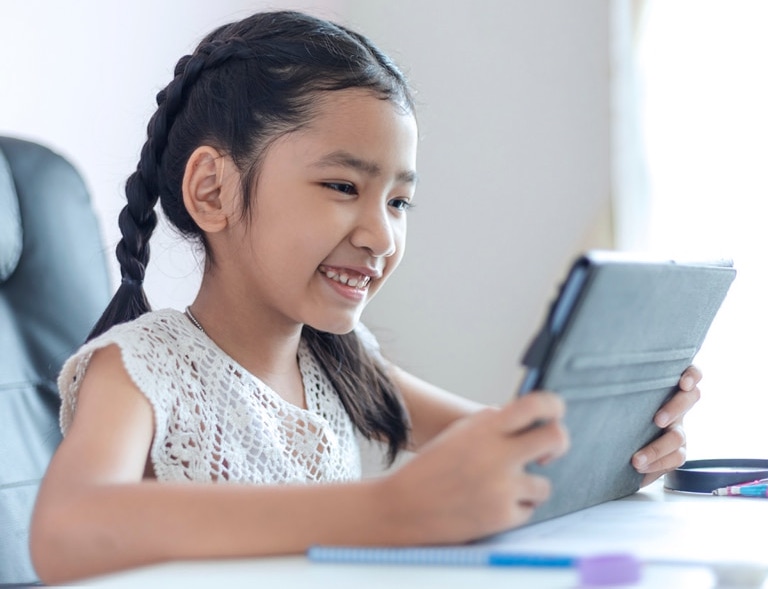hearing loss in children
Children with hearing loss
Educating yourself about children’s hearing care needs can help you make the best decisions for your child’s future. With fifty years of expertise, we’re knowledgeable about paediatric hearing care and work closely with leading hearing care professionals to offer holistic solutions for you and your children.


The ear-brain connection
Most people think that we hear with our ears, but really, we hear with our brain.¹ That means when sounds don’t reach a child’s brain, not only is it more difficult for them to hear, but they’re also not developing neural pathways that are fundamental to their development.
The brain develops rapidly in the first few years of life, which is why it’s so important for parents to act early. It’s even more vital to act quicky with babies with hearing loss because they’ll have already lost weeks of the usual development of their neural pathways at birth.
Children’s hearing tests
When your child has a hearing test, it can determine if hearing loss is present, if one or both of their ears are affected, the type of hearing loss, their degree of hearing loss, and if their hearing loss can be treated medically or with hearing technology. There are several types of hearing tests and screenings available.
Hearing screenings
These screenings are fast, reliable, painless, and show whether your child’s hearing is or is not at a normal level. If a child fails a hearing screening, they’ll be referred to a hearing care professional for a more detailed assessment.
Objective hearing tests
These tests are designed to check the responsiveness of the internal structure of the ear with vibrations or air pressure, and do not require your child to respond or participate when they hear a sound.
Behavioral hearing tests
During these tests, an audiologist records how your child hears and responds to sounds across different pitches, plotting them out on a graph.


Sky Lumity Audéo Lumity CROS Lumity
Hearing solutions for children
Sky Lumity
Our pediatric option, now equipped with the latest Lumity technology, featuring a range of pediatric color combinations.
Audéo Lumity
Featuring our most innovative hearing technology, Audéo Lumity models enable you to enjoy conversations while taking control of your hearing.
CROS Lumity
Our solution for clients with a unilateral hearing loss, now on the Lumity platform, with CROS and BiCROS options, as well as extended color options.
myPhonak Junior app
The industries only dedicated paediatric app, rated over 4 ⭐- designed to empower children while prioritizing their hearing performance, Remote Support and Remote Control accessible, while Parental Control provides the ability to tailor children’s experiences according to their level of development and independence.


Solutions for children with unilateral hearing loss (UHL)
UHL is a type of hearing loss where hearing in one ear is within normal limits while hearing in the other ear is reduced. The hearing loss in the affected ear can range from mild to profound in severity. It affects up to 6.3% of children in the U.S.³ and children with UHL are five times more likely to need support services.³ A unique combination of solutions is needed to give a child with UHL the best possible hearing experience.
Solution 1: Phonak Sky Lumity
The Phonak Sky™ Lumity hearing aid family is a recommended solution for a child with UHL who has hearing loss on one side that is aidable. Its AutoSense Sky Operating System automatically adapts to children’s everyday listening needs.
Solution 2: Phonak CROS L with Phonak Sky L-PR for children aged 6 years and older, or Audéo L-R/RT for children aged 8 years and older.
For a child with unaidable severe-to-profound hearing loss on one side, the Phonak CROS L microphone can help pick up sound from the side with hearing loss and send the sound to the normal hearing ear wearing a small Sky Lumity hearing aid.
Solution 3: Roger Focus II System
Another solution for a child with an unaidable hearing loss on one side is to use the Roger Focus II system, which—along with a Roger microphone—sends voices directly into a child’s normal hearing ear, providing them with better access to the teacher’s speech in a typical classroom.
Roger technology
Roger products can be used in everyday listening situations in conjunction with hearing aids, Cochlear implant speech processor or Roger Focus II, delivering the speaker’s voice directly to your child’s hearing solution. Children can benefit from this technology when they’re listening in noisy environments or when the person talking is at a distance.
At Home
A study showed that when Roger technology is used at home, children are exposed to almost 5,300 more words in an eight-hour day,⁴compared to wearing hearing aids alone. The same study also showed that while using the Roger system, 80% of families reported greater responsiveness, and 35% reported less frustration in their children.
At School
A Roger for Education system helps your child adapt to modern classrooms that are increasingly dynamic and interactive. It helps them get the clarity of sound they need to participate in activities, respond to questions, socialize with friends, and use multimedia devices.


The importance of communication
By exposing your child to various forms of communication every day, you can help them develop the relationships and skills they need to live a full life that will ultimately positively affect their well-being. Here are some things you can do to help them learn and socialize:
Keep their hearing aids on
Children with well-fit, consistently worn hearing aids have better speech and language outcomes.
Talk to them often
Children who hear more spoken language in the early years are more prepared for school and language demands as they grow.
Create a language-rich environment
Expose them to as many words as possible by singing, talking, reading stories, listening to music, and more.
Read out loud
Reading helps children with their vocabulary and helps them learn new concepts and build conversation skills.
Listen to music together
Music assists with early listening skills and develops the hearing centers in a child’s brain responsible for language and learning. It can also improve their ability to listen in noise.
AUDIOLOGY SERVICES
- Hearing Test
- Hearing Loss- Sudden Hearing Loss
- Dementia & Hearing Loss
- Hyperacusis & Sensitivity to Sounds
- Tinnitus
- Vertigo
- Dizzyness
- Hearing Aids
- Invisible Hearing Aids
- Hearing Aid Repair
- Free Pensioners & Veterans Hearing Aids
- Hearing Aid Batteries
- Hearing Services
- Ear Wax Removal
- Custom Ear Plugs
- Work Cover Services
- Industrial Hearing Test
- Hearing Aid Prices
AUDIOHEARING MELBOURNE CLINICS
- South Yarra
- Brighton
- Doncaster
- Armadale
- Prahran Malvern Road
- Prahran High Street
- St Kilda East
- Box Hill
- Balwyn
